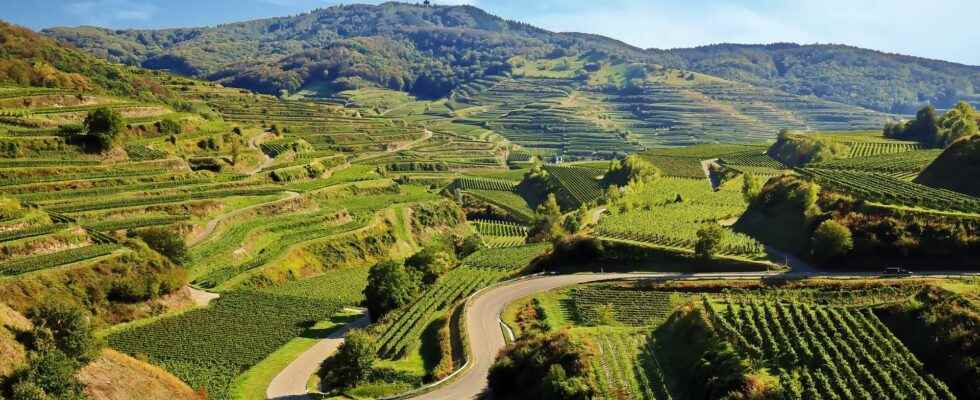You will also be interested
[EN VIDÉO] Geology of volcanic systems – an invitation to travel Interviews dating from 2009 with Georges Boudon, physicist at the IPGP, and members of the team studying the functioning of volcanoes, from the generation of magmas to eruptions. The vocation of IPGP films is to open the doors of laboratories and to accompany scientists in the world of geosciences. This film is part of a series of 14 short format films which are an invitation to travel from the cosmos to the center of the Earth. Design & production: Medi@terre, IPGP – 2009
Auvergne is not the only region to have a relief marked by relatively recent volcanic buildings. If you are passing through Alsace, make a detour to the other side of the German border. Between Colmar and Freiburg, right in the middle of this long depression known as the Rhine ditchis the Kaiserstuhl, in other words: the “Throne of the Emperor”.
Located in the south-west of Baden-Württemberg, in Germany, just a few kilometers from the border, this mountain range is indeed also linked to a volcanic history, dating from 16 to 18 million years ago.
A volcano in the Rhine plain
Contrary to the chain of Puysthe Kaiserstuhl appears to be a volcano lonely. However, this is not really the case if we look at the region on a larger scale. This volcanic edifice is indeed part of the greater province eruptive of central Europe, which has a few other volcanoes, including the Eifel, located much further north.
The volcano is certainly not very impressive. Largely eroded during the last ice Age, it rises today to a maximum altitude of 557 meters and forms an ellipse of 16 x 12 km. While walking on the sides of the massif, certain rocks remind us, however, that we are indeed on an ancient volcano. It is these rocks that make the Kaiserstuhl a very special volcano that has long remained an enigma for scientists.
Very rare volcanic rocks
If most of volcanic rocks issued by the Kaiserstuhl are said alkaline due to their composition rich in alkaline components (weldedpotash) and low in silica (40 to 56% SiO2), some rocks found contain virtually no silica (only 0.28 to 5.07%). These latter, called carbonatites, really mark the singularity of this volcano. They are in fact made up of 95% of calcitea very rare composition for volcanic rocks that are usually marked by the predominance of silica.
As a reminder, calcite is the mineral often found at the base of limestone and marbles, with the difference that the calcite is then of sedimentary origin in the first case, and metamorphic in the second. Finding calcite of igneous origin is extremely rare and has long posed a problem for geologists studying the Kaiserstuhl site. Previously, the Kaiserstuhl carbonatites were moreover described as marbles resulting from a contact metamorphismthat is to say formed by “cooking” of sediment limestone in contact with magma hot.
It is true that we know very few examples of volcanic carbonatites elsewhere in the world, barely a hundred. The volcano Oldoinyo Lengai in Tanzaniais currently the only active volcano to emit this type of washalthough the composition of its carbonatites is not exactly the same as those of the Kaiserstuhl.
Where does this singularity come from?
The origin of carbonatites is still debated. Two hypotheses clash. The first advances the fact that the carbonatitic magmas are formed directly in the terrestrial mantlein the same way as “classic” silicate magmas, i.e. by partial fusion of the peridotites. The difference comes from the fact that the mantle was previously enriched with CO2 and in calcium following an intense circulation of fluids, and at a very low degree of fusion: in other words, only a few minerals of the mantle will melt, to form a magma with a very specific composition which, by cooling on the surface, will give carbonatites.
The second hypothesis suggests that the carbonatitic magma comes from the fractional crystallization from a source magma rich in CO2 and calcium, within a Magma chamber. It is indeed common to observe this process of differentiation during the rise of the magma: it separates into two liquids magmatic deposits of different compositions which will follow different paths in the crust. The two hypotheses are not, however, incompatible.
The visit to the Kaiserstuhl is an opportunity for a nice hike in the vineyards laid out in terrace on the flanks of the ancient volcano.
Interested in what you just read?
